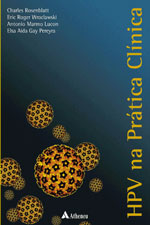Nova vacina para HPV final de 2014
A Nova vacina para HPV, que ainda não tem nome, no entanto, irá proteger contra cerca de 90% dos casos de câncer do colo do útero, diz o autor do estudo Elmar Joura, um professor associado de obstetrícia da Universidade Médica de Viena, na Áustria (que recebeu apoio financeiro e honorários do conselho consultivo da Merck). Ela protege contra os tipos de HPV 6, 11, 16, 18, 31, 33, 45, 52 e 58.
A cobertura contra as cepas extras pode ser uma boa notícia para as mulheres em todo o mundo, como algumas raças são propensas a diferentes tipos de HPV. No leste da Ásia, o HPV 52 e 58 são mais comuns do que os EUA ou Europa. Segundo Dr. Joura “A coisa boa é que a vacina nove valente vai equalizar essas diferenças” e “O grau de protecção será o mesmo em todo o mundo.”
No estudo, Joura e sua equipe analisaram dados de 12.514 mulheres e descobriram que idades 15-26 anos que tiveram pré-cânceres, 32% tinham mais de um tipo de HPV-esse número foi de 19% para as mulheres entre as idades de 24 a 45 .
A new nine-valent HPV vaccine could prevent up to 90% of cervical cancers.
A new version of the vaccine against the human papillomavirus (HPV) that protects against nine types of HPV may be available by early 2015. The new vaccine, V503, which is still in development by New Jersey-based Merck, would protect against about 90% of cervical cancers, according to the results of a study published in the journal Cancer Epidemiology, Biomarkers & Prevention. The study found that these nine subtypes are responsible for the majority of cervical dysplasia that can lead to cervical cancer.
Merck submitted a biologics license application to the US Food and Drug Administration (FDA), and in February of this year, the FDA approved the application under a standard review. A decision on approval of the new vaccine is expected by the end of 2014.
The international team investigating the vaccine, including study author Elmar A. Joura, MD, an associate professor of gynecology at the Medical University of Vienna in Austria, received grant support from Merck.
The currently available and FDA-approved vaccine, Gardasil, protects against four types of HPV and is effective at preventing up to 70% of cervical and other HPV-related cancers. Gardasil protects against two HPV subtypes that have been shown to cause cervical cancer, 16 and 18, and also protects against types 6 and 11, which cause genital warts.
In addition to subtypes 16, 18, 6, and 11, the new vaccine would also protect against HPV subtypes 31, 33, 45, 52, and 58. According to the International Agency for Research on Cancer, the list of HPV types that cause cancer has been expanded to include types 31, 33, 35, 39, 45, 51, 52, 56, 58, and 59.
According to Joura, these nine HPV subtypes are responsible for about 85% of precancerous cervical lesions, both cervical intraepithelial neoplasia (CIN), and adenocarcinoma in situ.
“If nine-valent HPV vaccination programs are effectively implemented, the majority of these lesions could be prevented,” said Joura in a statement.
The study authors used data from three prior international clinical trials of Merck’s quadrivalent HPV vaccine, which included 12,514 women between the ages of 15 and 45. Using information on the 2,507 women who were diagnosed with either CIN or adenocarcinoma in situ in the study, the authors estimated the number of precancerous lesions that would have been prevented by the the nine-valent vaccine. The study found that seven of the high-risk HPV types are present in 55%, 78%, 91%, and almost 100% of CIN1, CIN2, CIN3, and adenocarcinoma in situ lesions, respectively. The new vaccine would protect against all seven high-risk subtypes.
“If vaccination programs with this new generation vaccine are effectively implemented, approximately 90% of invasive cervical cancer cases worldwide could be prevented, in addition to the majority of precancerous lesions,” the authors concluded. Still, despite recommendations and guidelines for vaccination with the HPV vaccine in the United States, vaccination goals have yet to be reached, and uptake has not reached the expectation of the Centers for Disease Control and Prevention. According to the authors, achieving a 90% reduction in the rates of cervical cancer would require widespread adoption of HPV vaccines around the world.

